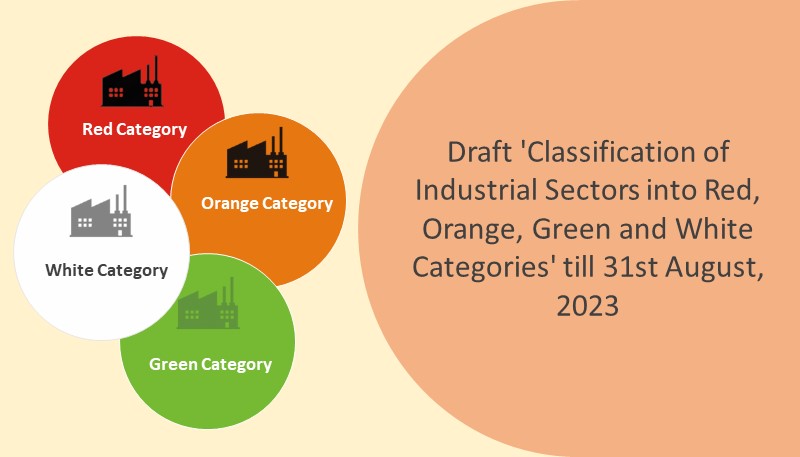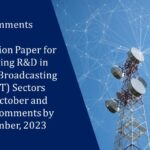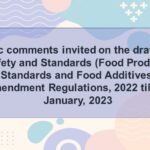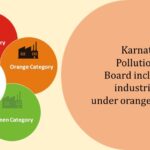The Central Pollution Control Board (“CPCB”) has invited comments on the “Classification of Industrial Sectors into Red, Orange, Green and White Categories” seeking inputs from stakeholders by 31st August, 2023.
Background:
In 1989, the Ministry of Environment and Forest introduced notifications for Doon Valley, Uttarakhand, which brought about the concept of categorizing industries into red, orange, and green classifications. This classification system aimed to ease the process of deciding the appropriate locations for these industries. Over time, this system was expanded to encompass other regions of the country, serving not only the purpose of industrial location but also playing a role in consent management and the establishment of norms for industry surveillance and inspection. In order to harmonize the criteria for categorization, in 2016, the CPCB devised a scoring methodology to standardize the categorization criteria for industries. This system involved the use of a Pollution Index (PI), which took into account factors such as water pollution, air pollution, hazardous waste generation, fuel consumption, and wastewater generation. Alongside this, CPCB introduced a new category known as the “white category,” encompassing “practically non-polluting industries.” The underlying principle behind this categorization concept is the “Precautionary Principle,” which centers on evaluating the potential environmental impact of industries in terms of pollution.
However, this manner of categorizations continued to raise some concerns-
1. Under the classification methodology of 2016, if a pollutant group was not present, the pollution index was normalized to 100. However, this normalization approach resulted in certain inconsistencies when comparing the pollution potential among different sectors. This was because it disproportionately increased the pollution index value in some cases. Additionally, it was noticed that in certain sectors, the normalization process involved subjective elements based on perception.
2. In the 2016 classification methodology, the scale of operations was taken into account using variables such as the quantity of water discharge and fuel consumption. However, this approach failed to adequately assign weightage to micro, small, medium, and large industries, as it did not effectively capture the significant variations in the size of their operations.
3. The classification methodology of 2016 did not take into account the individual pollution indices.
4. Variation in pollution potential due to type of fuel used was not given adequate weightage in classification methodology of 2016.
5. There was no effective provision for change in category of industries based on the variation in pollution potential of a sector, even if the industries adopt cleaner technologies or switch over to cleaner raw material/cleaner fuel etc., resulting into reduction in pollution index.
Considering the above, the CPCB has sought comments on the proposed to modify the methodology for classification of industrial sectors.
Comments sought on:
The classification methodology has been proposed to be adjusted by considering three categories of pollutants: water pollution, air pollution, and hazardous waste generation. Each of these pollutant groups was assigned a score out of 100. These scores are utilized to calculate a pollution index, which ultimately determines the industrial sector’s category.
1. Water Pollution-
The water pollution score is derived from three sub-scores, each focusing on different aspects: the oxygen demand of wastewater, the presence of specific types of pollutants, and the volume of wastewater generated. Sectors that produce effluents with high BOD/COD (biochemical oxygen demand/chemical oxygen demand), significant amounts of heavy metals/toxic compounds, and large volumes of wastewater receive higher scores. This is because they pose a greater threat to the environment due to their potential for causing more significant environmental damage.
2. Air Pollution-
The air pollution score is determined by adding three sub-scores, each considering different factors: the presence of specific pollutants in emissions, fugitive emissions and odor nuisance, and the type and quantity of fuel used. Sectors that emit hazardous air pollutants, have process-related fugitive emissions and odor issues, and use polluting fuels receive higher scores. These higher scores indicate a greater potential for causing environmental damage.
3. Hazardous Waste Generation-
The score for hazardous waste generation is composed of two sub-scores, which evaluate the appropriate waste management and disposal methods and the quantity of hazardous waste generated.
Comments may be sent by email to the Divisional Head, IPC-VI, CPCB, Delhi, via email at ipc6.cpcb@gov.in. with the subject line “Comments on draft report on classification”.
A copy of the notification is linked below for ease of reference.
Source: Central Pollution Control Board





